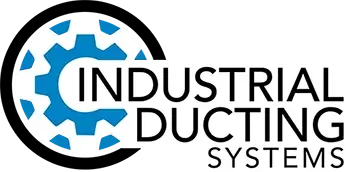Welding & Machining Fabrication Ducting Solutions
Welding and machining fabrication facilities combine multiple metalworking processes that generate diverse airborne contaminants including welding fumes, cutting particles, grinding dust, and coolant mist. These facilities typically serve multiple industries, processing various alloys and materials that create complex ventilation requirements addressing different emission characteristics and regulatory requirements.
Modern welding and machining operations increasingly involve automated processes, robotic welding systems, and high-speed machining centers that generate significant quantities of airborne contaminants. The trend toward exotic alloys and specialized coatings has introduced new emission types that may require specialized handling and control measures.
The industry faces increasing regulatory pressure regarding metallic exposures, particularly hexavalent chromium from stainless steel welding and various metal compounds from machining operations. Many facilities operate job shop environments with frequently changing processes and materials, creating dynamic ventilation challenges.
Specific Air Quality Requirements & Regulations
Welding and machining fabricators must comply with OSHA standards for numerous metallic exposures including iron oxide (10 mg/m³), chromium compounds (varies by form), manganese (5 mg/m³), and nickel compounds (1 mg/m³). Welding operations are subject to 29 CFR 1910.252, which requires local exhaust ventilation for enclosed spaces and specific materials.
Facilities performing stainless steel welding must address hexavalent chromium exposure under OSHA's chromium standard (29 CFR 1910.1026), which establishes an 8-hour TWA of 5 micrograms per cubic meter. This requires sophisticated exposure monitoring and engineering controls.
Machining operations using metalworking fluids must address potential exposures to various compounds including nitrosamines, biocides, and microbial contamination. OSHA's metalworking fluids criteria document provides guidance for exposure control and monitoring.
Temperature considerations vary significantly across welding and machining operations. Welding processes can generate localized temperatures exceeding 3000°F, while machining operations typically generate moderate heat loads. Ductwork must accommodate thermal expansion and potential spark exposure.
Construction Process & System Design Considerations
Welding and machining fabrication facilities require flexible ventilation systems that can accommodate diverse operations and varying production requirements. Construction must address the complex layout of fabrication equipment, including welding stations, machining centers, and material handling systems.
The construction process must coordinate with production schedules that often involve custom projects and tight deadlines. Phased installation approaches are common to maintain production capability while upgrading ventilation systems.
Ductwork design must accommodate the mobility requirements of welding operations while providing effective capture for fixed machining stations. Flexible connections and moveable capture arms are essential for welding fume control. Machining operations require enclosed systems or downdraft tables to control coolant mist and metallic particles.
Spark and hot particle control is critical throughout the system. Spark arrestors, settling chambers, and fire suppression systems may be required. Ductwork must be designed to prevent accumulation of combustible metallic dusts and coolant residues.
Technical Specifications & Performance Requirements
Welding and machining fabrication ventilation systems typically require 50,000 to 1,000,000 CFM depending on facility size and operations. Individual workstation requirements range from 1,500 CFM for small welding stations to 15,000+ CFM for large machining centers with coolant systems.
Ductwork materials must withstand high-temperature particles and potential chemical exposure from metalworking fluids. Stainless steel is preferred for coolant mist applications, while galvanized steel with appropriate coatings is suitable for welding fume applications.
Transport velocities must be adequate to carry metallic particles and coolant mist without settling. Typical design velocities range from 3,500-4,000 FPM for main lines and 4,000-4,500 FPM for branch connections carrying metallic contaminants.
Static pressure requirements typically range from 12-25 inches of water column, depending on filtration requirements and system complexity. High-efficiency filtration may be required for fine particles generated by precision machining and specialized welding processes.
How Industrial Ducting Systems Delivers Solutions
Industrial Ducting Systems has extensive experience with the diverse requirements of welding and machining fabrication, from traditional manual operations to advanced automated manufacturing systems. Our comprehensive approach addresses both particulate control and chemical emission control while maintaining operational flexibility.
Our 2D CAD design services provide detailed system layouts that accommodate the complex equipment arrangements and workflow patterns typical in fabrication facilities. We understand the importance of maintaining flexibility while providing effective capture at all workstations.
Our expertise in high-temperature applications ensures that systems can handle the thermal challenges of welding operations. We provide specialized components including spark arrestors, high-temperature ductwork, and chemical-resistant materials for coolant mist applications.
Our logistics coordination addresses the project-driven nature of fabrication work, understanding that production schedules often involve tight deadlines and custom projects. We provide installation approaches that maintain production capability while ensuring effective emission control performance.
Experience the Industrial Ducting Systems Advantage
Multi-process expertise, coolant mist control, hexavalent chromium compliance—discover why welding and machining shops trust us with their most demanding fume extraction and emission control challenges. Let's design a system that exceeds your expectations.
